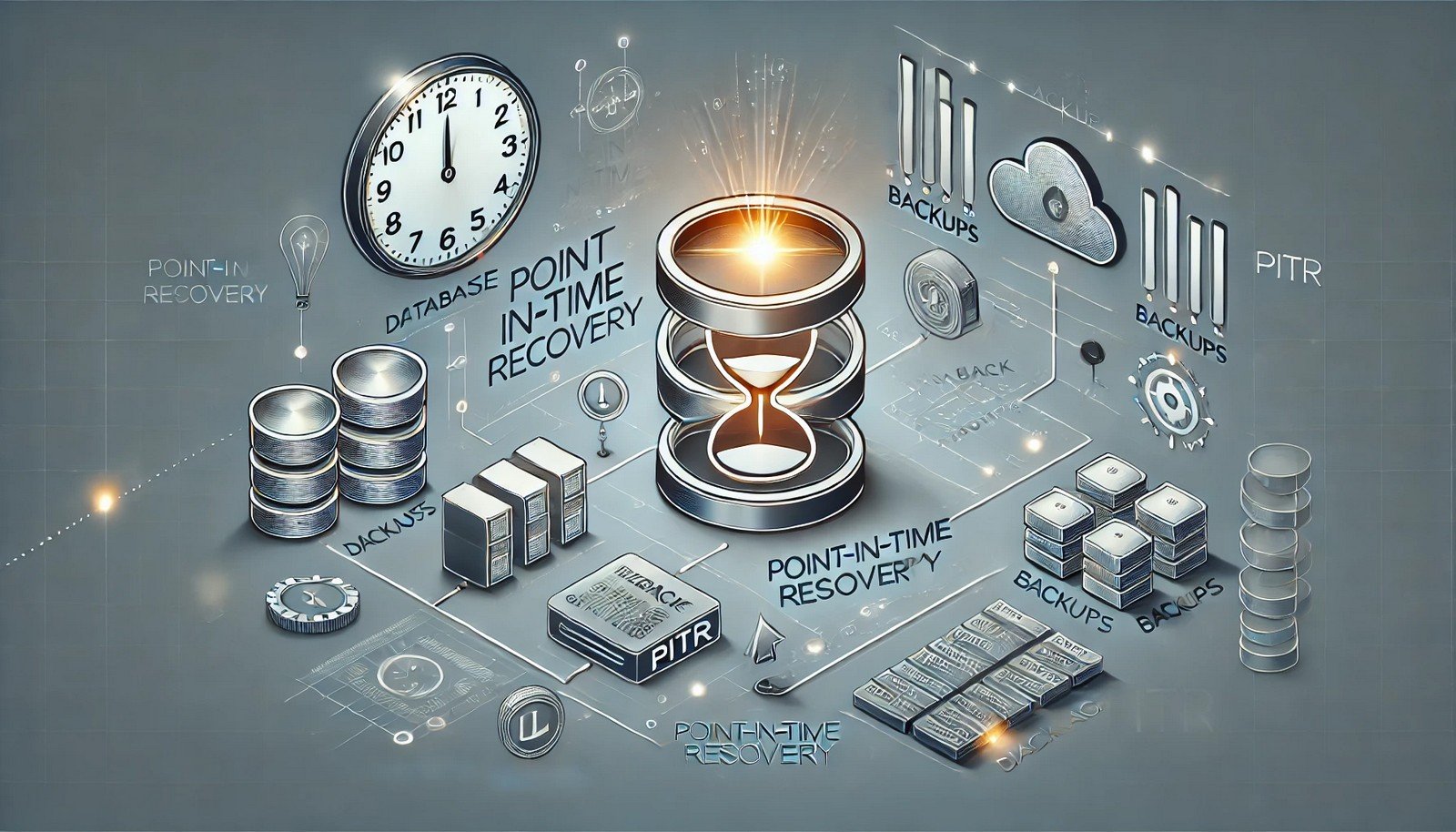Point-in-Time Recovery

(Representational Image | Source: Dall-E)
Quick Navigation:
- Point-in-Time Recovery Definition
- Point-in-Time Recovery Explained Easy
- Point-in-Time Recovery Origin
- Point-in-Time Recovery Etymology
- Point-in-Time Recovery Usage Trends
- Point-in-Time Recovery Usage
- Point-in-Time Recovery Examples in Context
- Point-in-Time Recovery FAQ
- Point-in-Time Recovery Related Words
Point-in-Time Recovery Definition
Point-in-Time Recovery (PITR) is a data recovery mechanism that enables restoration of a database or system to a specific moment in time. This technique is widely used in databases and storage systems to recover from failures, data corruption, or accidental deletions. PITR relies on transaction logs, incremental backups, or snapshots to roll back to a chosen timestamp, ensuring minimal data loss.
Point-in-Time Recovery Explained Easy
Imagine you are playing a video game, and you can save your progress at different points. If something goes wrong, you can load a previous save and start again from that point. Point-in-Time Recovery works the same way for databases—it lets you go back to a specific moment before a mistake happened, just like loading a saved game.
Point-in-Time Recovery Origin
The concept of PITR originated in the early days of database management when organizations needed ways to protect and restore critical data. With the advent of log-based recovery mechanisms in relational databases, PITR became an essential feature in modern database management systems.
Point-in-Time Recovery Etymology
The term “Point-in-Time Recovery” is derived from the idea of restoring data to a precise moment in time before a failure or unwanted change occurred.
Point-in-Time Recovery Usage Trends
In recent years, PITR has gained significant traction due to the increasing reliance on cloud-based databases and distributed storage systems. Enterprises and cloud providers incorporate PITR as a standard offering to ensure high availability and business continuity. Adoption has surged in industries dealing with financial transactions, healthcare records, and enterprise resource planning, where data integrity is critical.
Point-in-Time Recovery Usage
- Formal/Technical Tagging:
- Database Recovery
- Data Backup & Restore
- Disaster Recovery - Typical Collocations:
- "Enable Point-in-Time Recovery"
- "Point-in-Time Recovery feature"
- "Database Point-in-Time Recovery"
- "Performing PITR rollback"
Point-in-Time Recovery Examples in Context
- A banking system uses Point-in-Time Recovery to restore an account balance before an erroneous transaction occurred.
- A cloud database provider enables PITR so customers can recover data after accidental table deletions.
- A cybersecurity firm leverages PITR to restore files that were encrypted by ransomware.
Point-in-Time Recovery FAQ
- What is Point-in-Time Recovery?
Point-in-Time Recovery allows restoring a database or system to a specific past moment to recover lost or corrupted data. - How does PITR work?
PITR relies on backups, transaction logs, and incremental snapshots to reconstruct the state of data at a chosen timestamp. - Why is PITR important?
It minimizes data loss and ensures business continuity in case of failures, accidental deletions, or cyberattacks. - What are common use cases for PITR?
It is commonly used in financial services, cloud databases, healthcare records, and enterprise IT systems. - Can PITR be automated?
Yes, many modern database systems provide automated PITR features to enable quick and efficient recovery. - What types of backups are used in PITR?
Full backups, incremental backups, and transaction log backups are typically used for PITR. - Is PITR available in cloud databases?
Yes, cloud providers like AWS, Azure, and Google Cloud offer PITR as part of their database management solutions. - How does PITR differ from full backup recovery?
PITR restores data to a specific timestamp, while full backup recovery restores the entire system to the last full backup. - Does PITR work for all databases?
Most modern relational and NoSQL databases support PITR, but implementation details may vary. - What are the limitations of PITR?
PITR requires transaction logging, sufficient backup storage, and a defined retention policy for logs and snapshots.
Point-in-Time Recovery Related Words
- Categories/Topics:
- Database Management
- Data Protection
- Disaster Recovery
Did you know?
Point-in-Time Recovery is critical in ransomware defense. Many organizations use PITR to roll back encrypted files to a state before an attack, avoiding ransom payments and ensuring data integrity.
PicDictionary.com is an online dictionary in pictures. If you have questions or suggestions, please reach out to us on WhatsApp or Twitter.Authors | Arjun Vishnu | @ArjunAndVishnu

I am Vishnu. I like AI, Linux, Single Board Computers, and Cloud Computing. I create the web & video content, and I also write for popular websites.
My younger brother, Arjun handles image & video editing. Together, we run a YouTube Channel that's focused on reviewing gadgets and explaining technology.



Comments powered by CComment